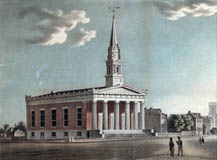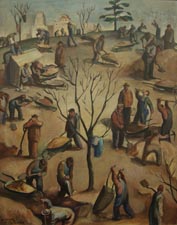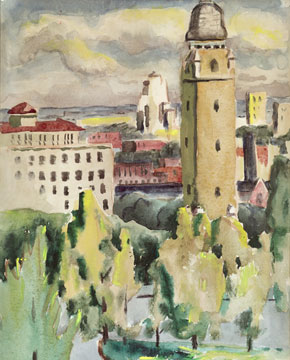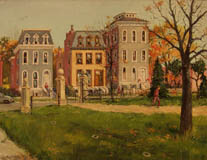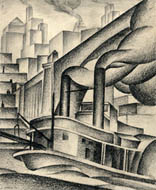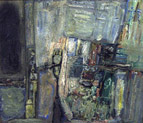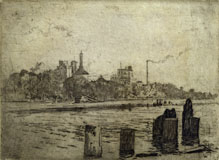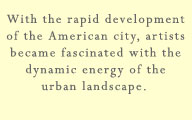
During the last quarter of the 19th century, the United States was transformed from an agricultural to an industrial society and saw the rise of large cities. Their growth was powered, in part, by the influx of people leaving the countryside to work and live in the city, as well as by a steadily rising number of European immigrants.
The newly wealthy businessmen and industrialists adopted the attitude of noblesse oblige and provided financial support to cultural institutions such as museums and symphonies in an effort to educate the urban working population. Simultaneously, American artists responded to an ever strengthening wave of nationalism and strove to cast off previously dominant European influences to develop a uniquely American style of art. In this environment of rapid social, economic and cultural change, the new American cities became a prime subject for artists.
Painting the American landscape was a well-respected genre by this time, but while earlier artist-explorers created charming, if often homogeneous, city views that extolled the nation’s progress in taming the wilderness, later artists glorified specific aspects of each city’s urban landscape, from the city parks to the factories lining the rivers. Even today, artists still find beauty in the play of light on the urban landscape.
